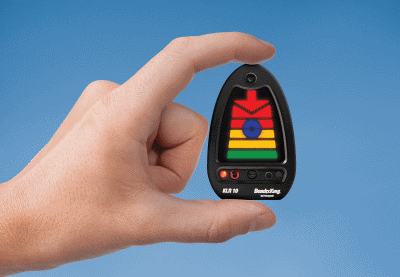Sat, Jul 09, 2016
Encourages Use Of Non-Required Safety Equipment
A new FAA policy encourages general aviation aircraft owners to voluntarily install safety equipment on airplanes and helicopters that is not required by the agency’s regulations. It will reduce costs and streamline the installation of Non-Required Safety Enhancing Equipment (NORSEE) into the general aviation fleet.

The policy is the result of industry and government collaboration under the General Aviation Joint Steering Committee and expands the 2014 FAA policy, which simplified the design approval requirements for a cockpit instrument called an angle of attack (AOA) indicator. AOA devices can be added to small planes to supplement airspeed indicators and stall warning systems, alerting pilots of a low airspeed condition before an aerodynamic stall occurs. Such stalls are particularly dangerous during takeoff and landing.
NORSEE includes avionics, electronic instruments, displays and mechanical equipment. Equipment approved as NORSEE increases overall situational awareness; provides additional information other than the aircraft primary system; provides independent warning, cautionary, or advisory indications; and provides additional occupant safety protection. Examples of NORSEE equipment include: traffic advisory systems, terrain awareness and warning systems; attitude indicators; fire extinguishing systems; and autopilot or stability augmentation systems.
The policy has the flexibility to accommodate the installation of new technology safety enhancements into Part 23, 27, and 29 aircraft that are determined to be a minor change to type design. The benefits must outweigh the risk. The policy will reduce equipment costs by allowing the applicants the flexibility to select various industry standards that suit their product, as long as it meets the FAA’s minimum design requirements.

NORSEE approval under this policy is not an approval for installation on the aircraft – it just makes the equipment eligible for installation on the aircraft. There may be a situation in which installation of the equipment on the aircraft requires modifications that are considered a major change to type design, or major alteration to the aircraft. In these cases, the applicant is required to pursue the appropriate certification path (such as a supplemental type certificate), or field approval process, regardless of the “non-required” designation. The FAA’s online list of approvals will be updated regularly.
(Source: FAA news release. Images from file)
More News
Ultrahigh Frequency (UHF) The frequency band between 300 and 3,000 MHz. The bank of radio frequencies used for military air/ground voice communications. In some instances this may >[...]
During The 7 Second Descent, There Was Another TAWS Alert At Which Time The Engine Remained At Full Power On October 24, 2025 at 2115 mountain daylight time, a Cirrus SR22T, N740TS>[...]
From 2009 (YouTube Edition): Educational Organization Aims to Inspire by Sharing Tuskegee Story Founding leader Don Hinz summarized the Red Tail Project’s mission in simple, >[...]
“This feels like an important step since space travel for people with disabilities is still in its very early days... I’m so thankful and hope it inspires a change in m>[...]
Also: New Katanas, Kern County FD Training, IndiGo’s Botched Roster, MGen. Leavitt Named ERAU Dean The Australian Transportation Safety Bureau (ATSB) has wrapped up its inves>[...]
 ANN's Daily Aero-Term (12.19.25): Ultrahigh Frequency (UHF)
ANN's Daily Aero-Term (12.19.25): Ultrahigh Frequency (UHF) NTSB Prelim: Cirrus Design Corp SR22T
NTSB Prelim: Cirrus Design Corp SR22T Classic Aero-TV: The Red Tail Project--Carrying the Torch of the Tuskegee Airmen
Classic Aero-TV: The Red Tail Project--Carrying the Torch of the Tuskegee Airmen Aero-News: Quote of the Day (12.19.25)
Aero-News: Quote of the Day (12.19.25) Airborne 12.17.25: Skydiver Hooks Tail, Cooper Rotax Mount, NTSB v NDAA
Airborne 12.17.25: Skydiver Hooks Tail, Cooper Rotax Mount, NTSB v NDAA




